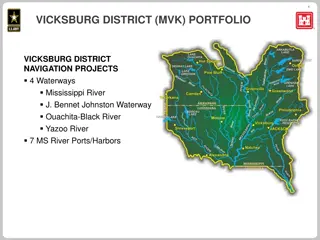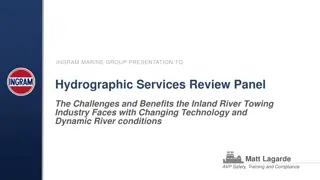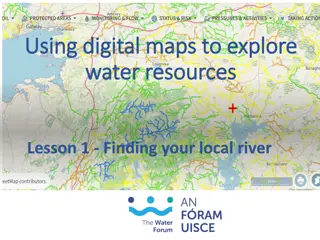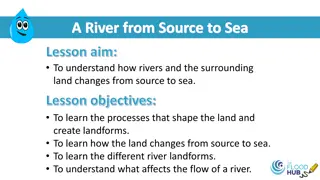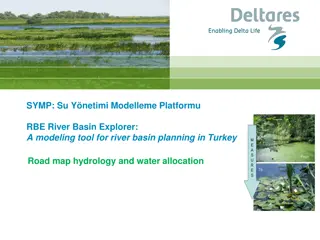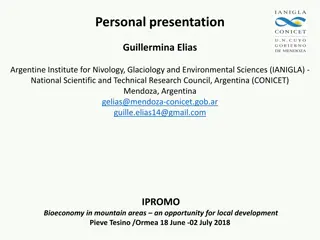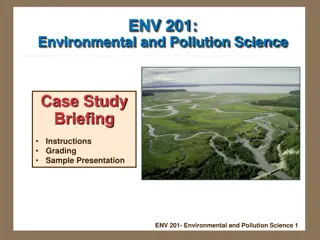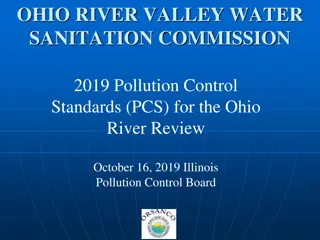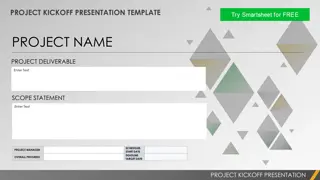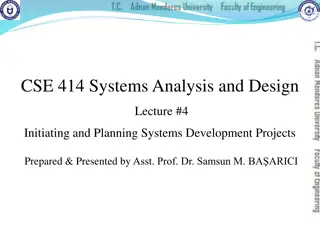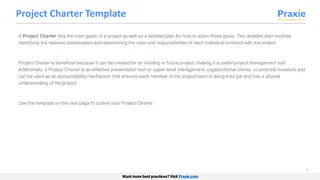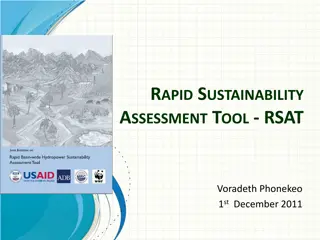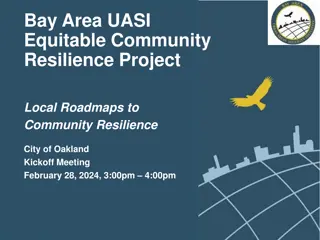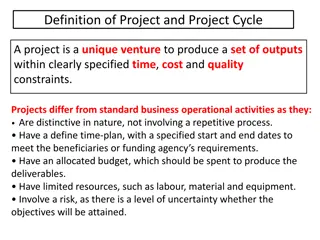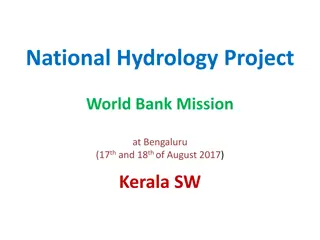Yukon River Hydrokinetic Project Overview
The Yukon River Hydrokinetic Project is a multi-year initiative aimed at harnessing renewable energy resources to reduce dependence on costly diesel-powered generation facilities in smaller Alaskan communities. Funded by the Denali Commission, this pioneering project involves innovative technical solutions and unique factors making it one of the first of its kind in Alaska. The successful installation and commissioning of a barge-mounted turbine have demonstrated the potential of hydrokinetic technology to provide sustainable electricity to isolated areas.
Uploaded on Sep 14, 2024 | 0 Views
Download Presentation

Please find below an Image/Link to download the presentation.
The content on the website is provided AS IS for your information and personal use only. It may not be sold, licensed, or shared on other websites without obtaining consent from the author. Download presentation by click this link. If you encounter any issues during the download, it is possible that the publisher has removed the file from their server.
E N D
Presentation Transcript
National Hydropower Association Alaska Regional Meeting August 2011, Girdwood, AK Alaska Power & Telephone Presentation on the Yukon River Hydrokinetic Project at Eagle, AK
Yukon River Hydrokinetic Project Multi-year project to perform: Permitting Studies Engineering Manufacturing Application Evaluation Permitting AK DNR US FWS USACOE FERC Studies Energy Survey Potamological Biological Engineering Management Technical solutions Deployment/Recovery Anchoring/Mooring O&M procedures Manufacturing Turbine Barge Anchors Power conversion Support Application Construction Installation Commissioning O&M Monitoring Evaluation Performance Expense Alaska Regional Meeting August 2011
Yukon River Hydrokinetic Project Facts: Funded by the Denali Commission $1.6 mil grant awarded in 2007 $1.5 mil grant awarded in 2010 Administered by the Alaska Center for Energy and Power Installed and commissioned in 2010 Barge mounted New Energy EnCurrent 25kW turbine AC-DC-AC power conversion Output 3 , 60Hz power exported to 7200V Eagle distribution system Relocating in 2012 to the ACEP Nenana Test Facility on the Tanana River for further studies Alaska Regional Meeting August 2011
Yukon River Hydrokinetic Project Importance to Alaskans Potential renewable energy resource Reduce dependence on costly diesel powered generation facilities Increase sustainability of smaller Alaskan towns and villages by reducing economic burden of fossil fueled generation Similar technology to tidal generators Technical solutions may be applicable to both models Unique factors about the project One of the first of its kind in Alaska First of its kind in Alaska to be fully integrated into the local utility grid First its kind to provide electricity to an isolated Alaskan community Alaska Regional Meeting August 2011
Yukon River Hydrokinetic Project Project Successes Performance and reliability of the technology Turbine generator Barge Power generation, both in: Parallel mode auto-synchronizing with diesel powered generation system, and Standalone mode supplying electricity to an isolated section of the Eagle grid. Potamological studies and surveying performed by TerraSond Biological studies performed by the University of Alaska Fairbanks and BioSonics Cooperation of AP&T with the consultants, technology developers and equipment suppliers Anchor Deployment and recovery Power conversion and integration Control and communication Alaska Regional Meeting August 2011
Yukon River Hydrokinetic Project Lessons learned Technology Vertical axis cross flow turbine appears to have negligible impact on fish Careful subsurface power cable routing critical to minimize failures Number of subsurface mooring lines should be minimized Turbine performance dramatically effected by river turbulence Operations Challenges of working with a powerful force of nature Challenges of operating the technology in a remote location Challenges in the logistics of rapidly providing necessary O&M support forces Maintenance Challenges associated with periodic debris drift on the river Susceptibility of the equipment to fouling and damage Difficulty in managing the large submerged and hidden neutrally buoyant objects Requirement for a large crew to be available to remove heavy accumulations Maintenance expenses at the site far exceed the value of the modest generation revenue Alaska Regional Meeting August 2011










